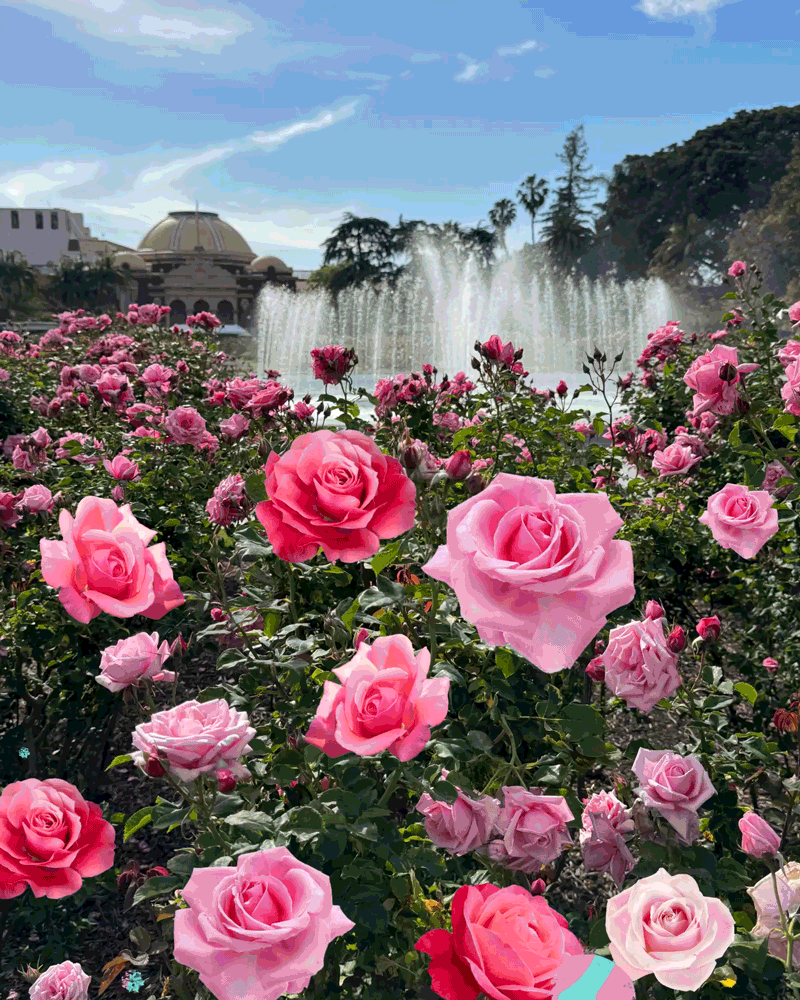Animal-shaped Fitbit routes? Yes, please

By Mary Forgione
Wecome to The Wild!
To watch Norbert Asprion run, you wouldn’t guess his feet are creating works of art. The chemical engineer from Ludwigshafen, Germany, runs about 30 miles a week and plots routes on a mobile app to make detailed animal shapes. And they’re adorable. “The nice thing is that so many people like the animals,” he wrote in an email. “And it is nice to make them smile in these strange times.”
Indeed, Norbert’s creatures are a wonder to behold on his mobile phone. He started when his friend Marcus asked him to plot a route in the shape of a pig. Then Marcus’ son asked him to create a “sausage dog.” And he did that too. He even created a unicorn for a young girl who had undergone cancer treatments.
How does he do it?
“For the planning and navigation, I use an app for hiking, running and cycling which is called komoot,” he explained. “It has very detailed maps worldwide, with even small ways in the backyard of houses. First I look in the map [to see] if I can find a characteristic detail of an animal. Maybe it is comparable to looking in the sky, sometimes we see something in the clouds. When I then see something, for example, the head of the turtle, then I look to see if the rest also fits. Sometimes it is not easy. You need to be flexible and not focused on one [shape] if you want to run in the city. It helps to imagine different views, from the side or front.”
He Googles drawings to get ideas on how to construct the shape. Then he loads the navigation onto his mobile app to create the critters on the map as he runs, using oral directions as his guide. “I have to take a look on the map as well in case of doubt,” he wrote, adding that the Adidas running app “makes the best drawings, in my opinion.” Norbert created 36 mapped animals in Ludwigshafen, five others nearby, and the pig, in Mannheim, for a total of 42.
Does he plan to do more? “Not so far. I decided to make a creative break,” he said. And then there’s this reason to call it quits: “42 is the number related to the question of the sense of life, for those who know the British author Douglas Adams and ‘The Hitchhiker’s Guide to the Galaxy.’ ”
I’ve found stories about other running artists in Britain. Anyone in L.A. have shareable routes of animals that runners can do on their own? Send me a note at TheWild@latimes.com.
3 things to do this week

1. Take a bike ride and learn about L.A.’s pioneering women. It’s Women’s History Month! L.A. history meets cycling at in-person tours of the city. Handlebar Bike Tours, a woman-owned business since 2017, schools you about 19th century Black entrepreneur and philanthropist Biddy Mason and pioneer lawyer Clara Shortridge Foltz. “We incorporate women’s history into our Historic Core and Skyline tours,” company founder and English teacher Jennifer Nutting writes in an email. Tours cost $45, take about 2½ hours and are limited to eight participants. Find out more here.
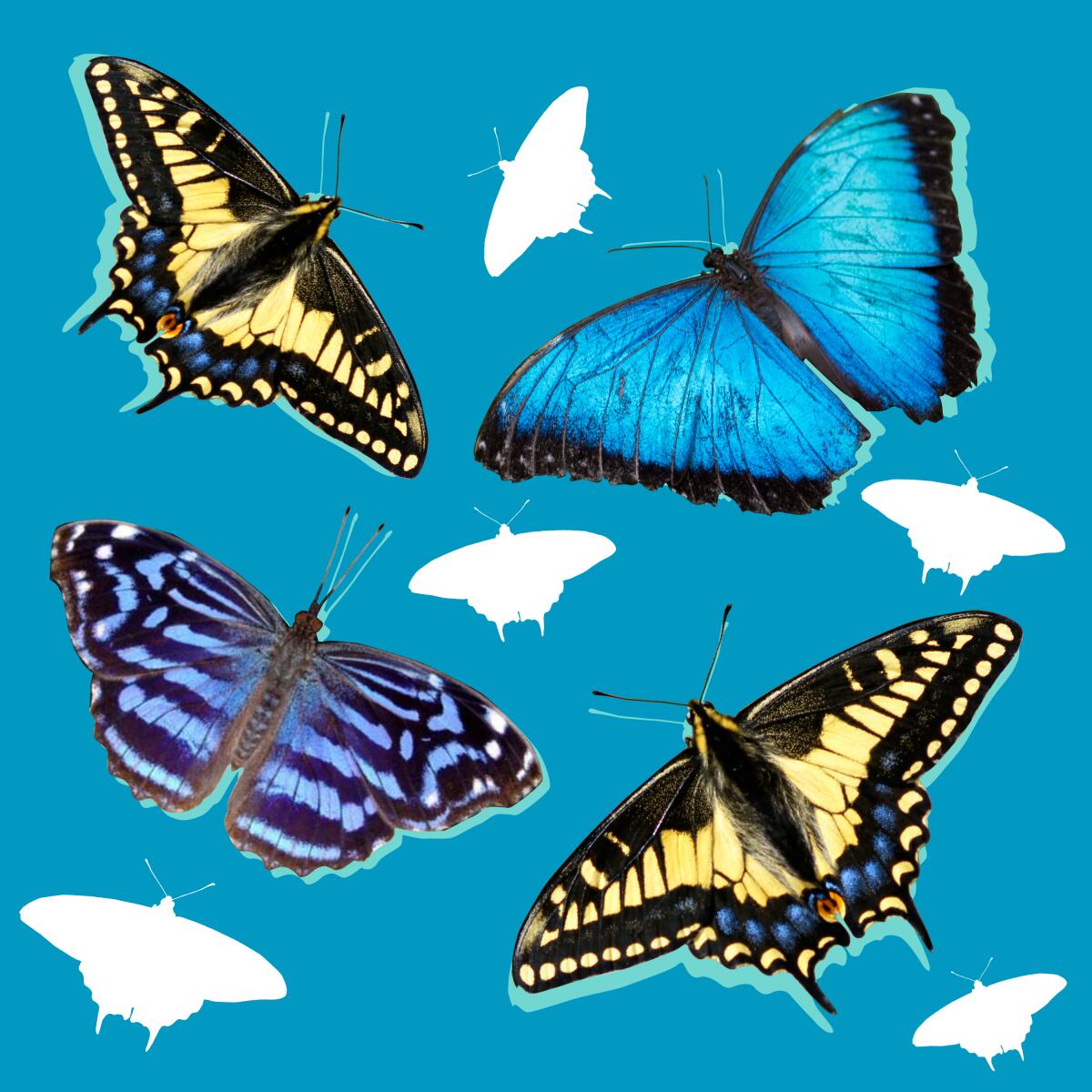
2. See butterflies close up at L.A.’s Butterfly Pavilion. The Natural History Museum of L.A. will open its seasonal butterfly pavilion March 18. Inside you’ll see new species for 2021: the iridescent blue morpho, Mexican blue wings and a marbled gray-and-white one called a cracker for the sounds it makes. Where do the butterflies come from? Some are native, some are purchased from a supplier in Costa Rica. Both types of butterflies are hand-raised from pupa in chambers with controlled temperature, lighting and humidity.
Then all types — neon green-and-black malachite, painted ladies and anise swallowtails — are released into the pavilion, where they usually live about two weeks. Don’t try to touch them or carry one on your finger; you may harm them. “It can be completely silent inside,” said Forest Urban (yes, that’s his real name), manager of invertebrate living collections at the museum. “You don’t even realize that there are hundreds of butterflies coasting around your head.”
Though you won’t see California monarchs inside, you’ll find them outside on a stroll through the surrounding Nature Gardens. The museum remains closed because of the pandemic, but the pavilion will open 9:40 a.m. to 5 p.m. Thursdays through Sundays until Sept. 6. Pandemic rules require visitors to buy tickets in advance ($6 for entry and $6 for parking); no more than 10 people are allowed into the butterfly room at a time. More info here.

3. Find out what’s new at Channel Islands National Park. Boats are running from Ventura to Channel Islands National Park, but what’s there to do when you arrive? Park superintendent Ethan McKinley will talk about what’s happening on the islands (Anacapa, Santa Cruz, San Miguel, Santa Rosa and Santa Barbara) and what proposals are in the works for new hiking and camping options. Juliana Matos, the park’s biosecurity manager, will discuss the best ways to protect the islands’ fragile ecosystem from invasive species. Join the free Zoom webinar 7 to 8:30 p.m. March 18 by registering here. It’s free and hosted by the Santa Barbara Maritime Museum.
Cool gear

Look what dropped in time for Women’s History Month. Montana-based sock maker Vim & Vigr held an online contest for a design that would honor women runners, cyclists and hikers who want to show their true colors. Artist Emma Covill’s cool illustrations were selected for the limited-edition Purple Reign socks. They’re made of 58% cotton, 42% nylon and 10% spandex (latex-free, for those who have allergies). Part of the proceeds benefit a women’s leadership program at the University of Montana. $36; order here.
The must-read
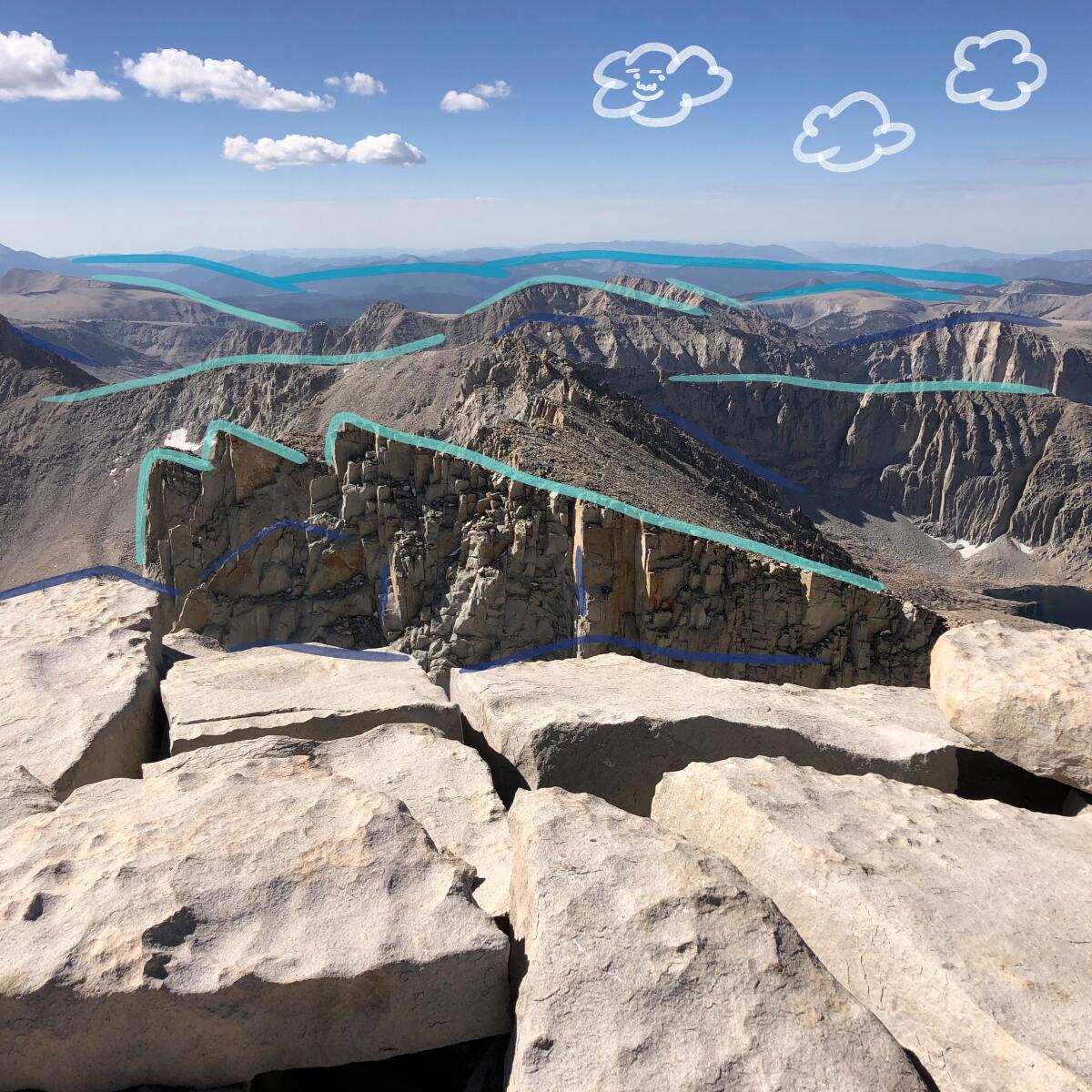
The clock is ticking for hikers who want to apply for a permit to hike to the top of the 14,505-foot Mt. Whitney in the southern Sierra near Lone Pine. Take your pick of day hiking — doing the entire 22 miles, 6,000 feet of gain in a single day — or backpacking and staying overnight. My colleague Rachel Schnalzer completed the hike in a day last year and shares what you need to know for a successful summit. Start by applying for a permit by March 15 (click here for details; permits are required May to October). Then follow her suggested training schedule to prepare to tackle the route in summer. Full story here.
Social moment
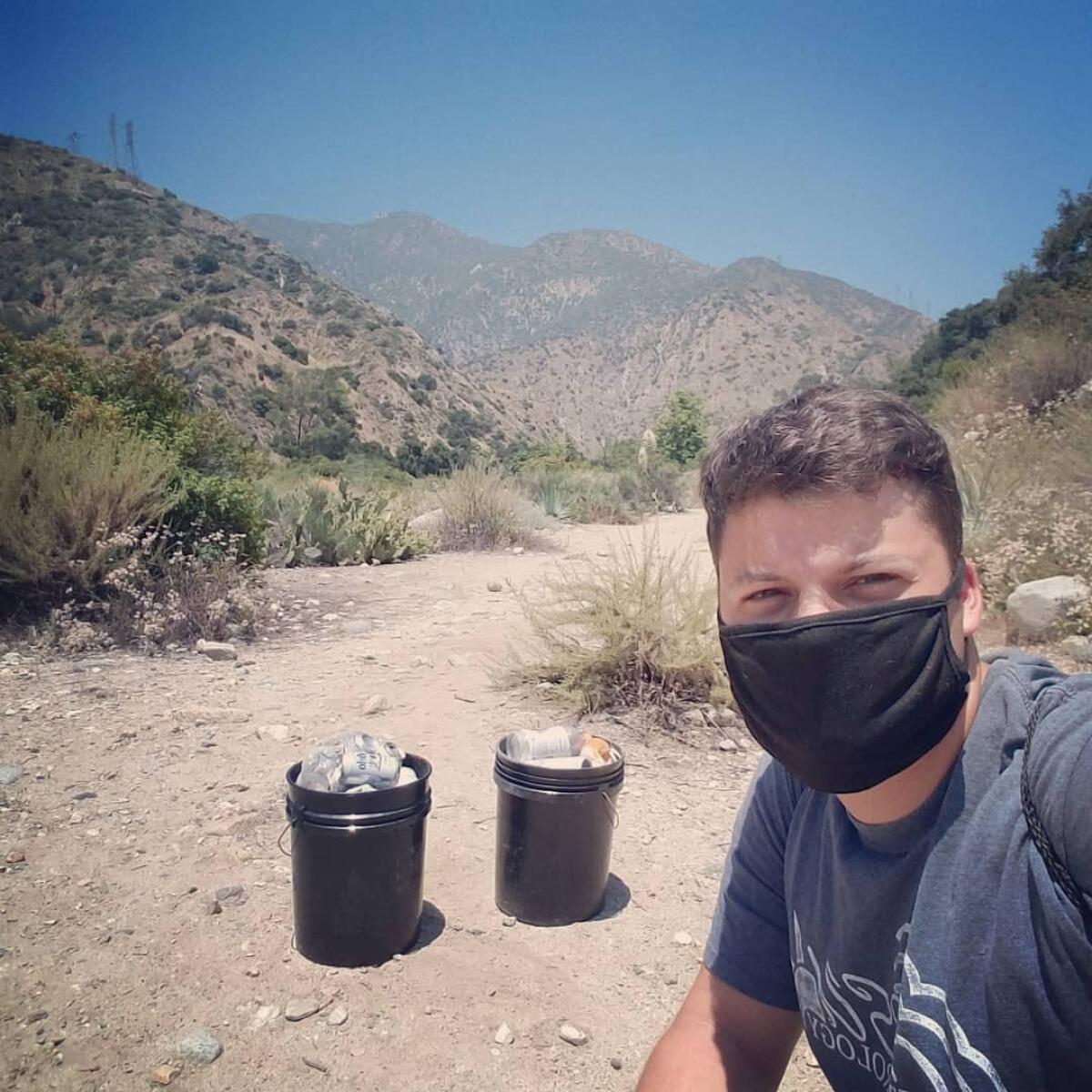
Edgar McGregor thinks about the planet — a lot. The 20-year-old, who identifies as autistic, has picked up trash from popular trails in Eaton Canyon for 592 days in a row. “I guess the real reason why is because I don’t know how else to express to you all that this may be our last chance to prove to future generations that we are better than this,” he tweeted Monday. He documented his progress @edgarrmcgregor on Twitter and has plans to move on to other areas in need of help.
McGregor’s trash collection is no small thing. Forest officials say they remove more than 10 tons of trash a week from nearby San Gabriel Canyon in the Angeles National Forest. To make his point, McGregor also posted this: “I think about the year 2100 more than I should. There is a real chance I’ll still be around. There is a real chance I could meet my great-grandchildren. I wonder what I am going to say to them about the climate crisis ... I wonder if I’ll say “We did it!!” or “I’m so sorry ...”
P.S.
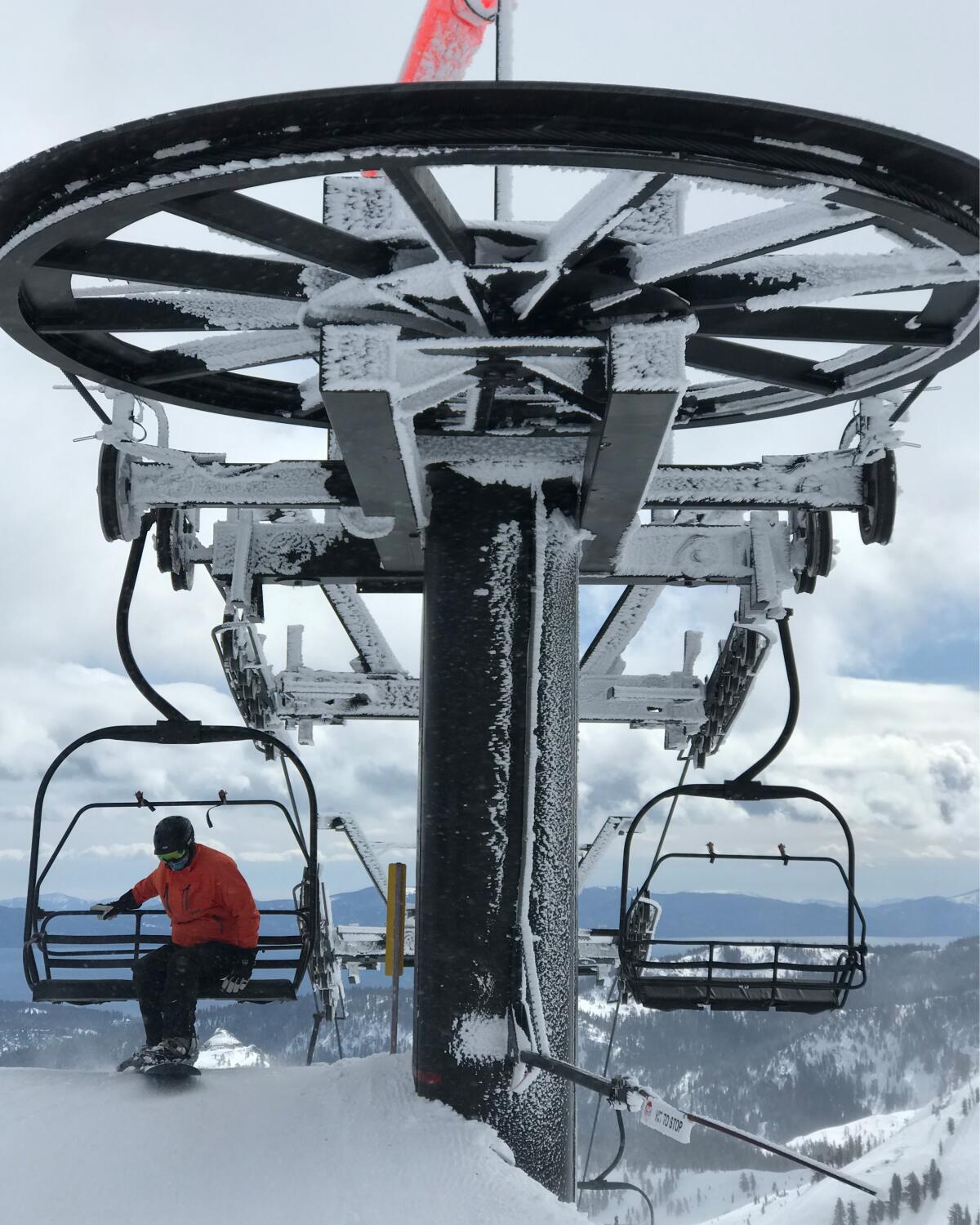
Feel like you missed out on skiing this winter? There’s still time. California ski resorts have midweek lift tickets on sale. Those who visit Mammoth Mountain on Mondays through Fridays will find two-day adult lift tickets cost $199 (instead of the usual $337). Save more if you stay overnight too. Squaw Valley / Alpine Meadows offers a discounted Midweek 4 Pack — four midweek days of skiing — for $389, or $97.25 per day, about 40% off usual prices. Mt. Rose in Nevada near Lake Tahoe offers $105 lift tickets midweek instead of $145 on weekends. Conditions are good and more snow may be on the way. No walk-up tickets because of the pandemic; buy in advance online. And in case you have FOMO, note that Heavenly and Northstar plan to stay open through April 18; Kirkwood, until April 11.

What’s happening with desert wildflowers? After a modest forecast earlier in the season, it looks as if a late-season “burst” may happen in the Anza-Borrego Desert State Park in northern San Diego County. A rainstorm last week brought a little less than a quarter-inch of rain Wednesday afternoon, enough to fuel some blooms in three to six weeks. It won’t be a superbloom, but it could bring color in late March or early April. Read the full story here.
Send us your thoughts
Share anything that’s on your mind. The Wild is written for you and delivered to your inbox for free. Drop us a line at TheWild@latimes.com.
Click to view the web version of this newsletter and share it with others, and sign up to have it sent weekly to your inbox. I’m Mary Forgione, and I write The Wild. I’ve been exploring trails and open spaces in Southern California for four decades.

Sign up for our L.A. Times Plants newsletter
At the start of each month, get a roundup of upcoming plant-related activities and events in Southern California, along with links to tips and articles you may have missed.
You may occasionally receive promotional content from the Los Angeles Times.



